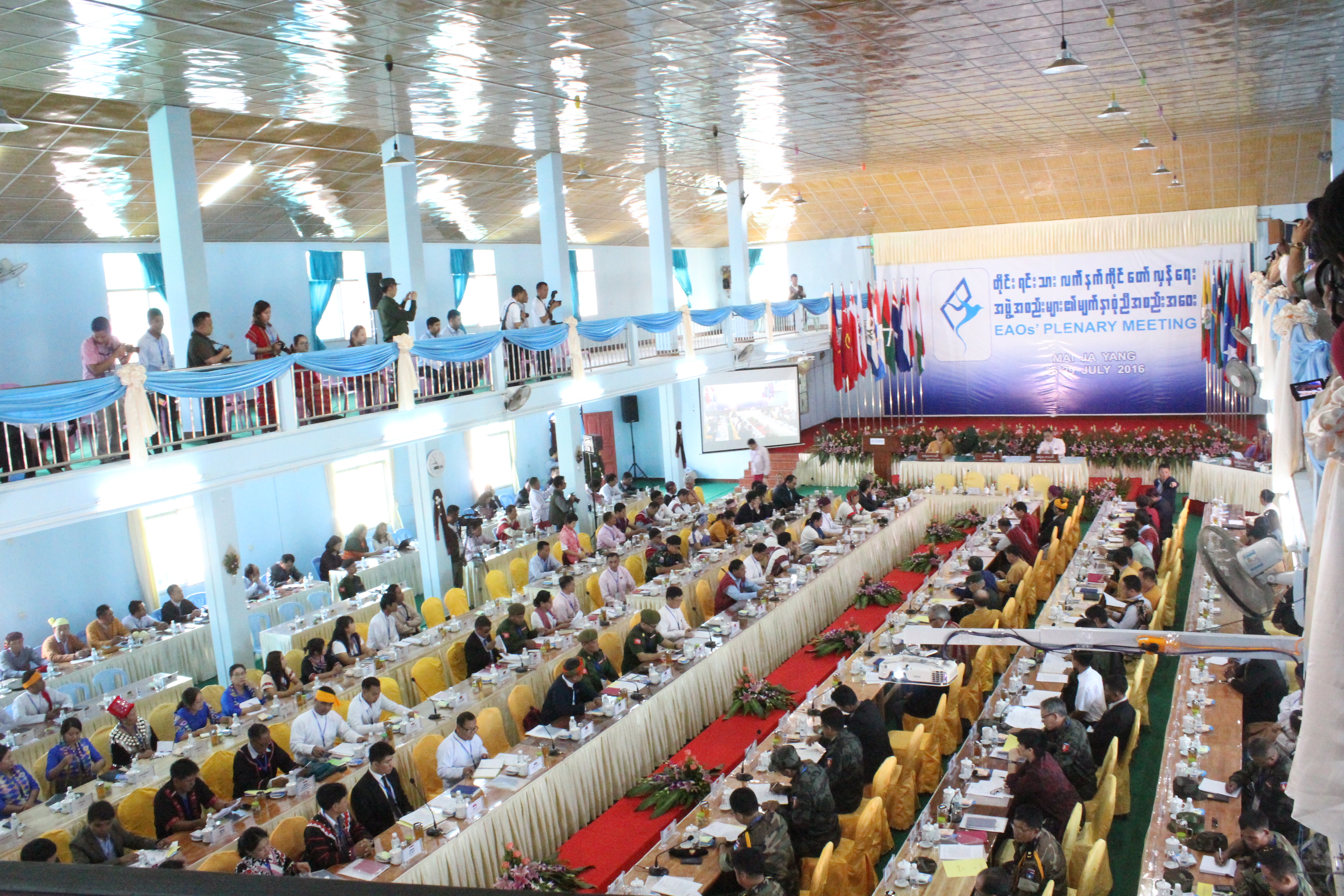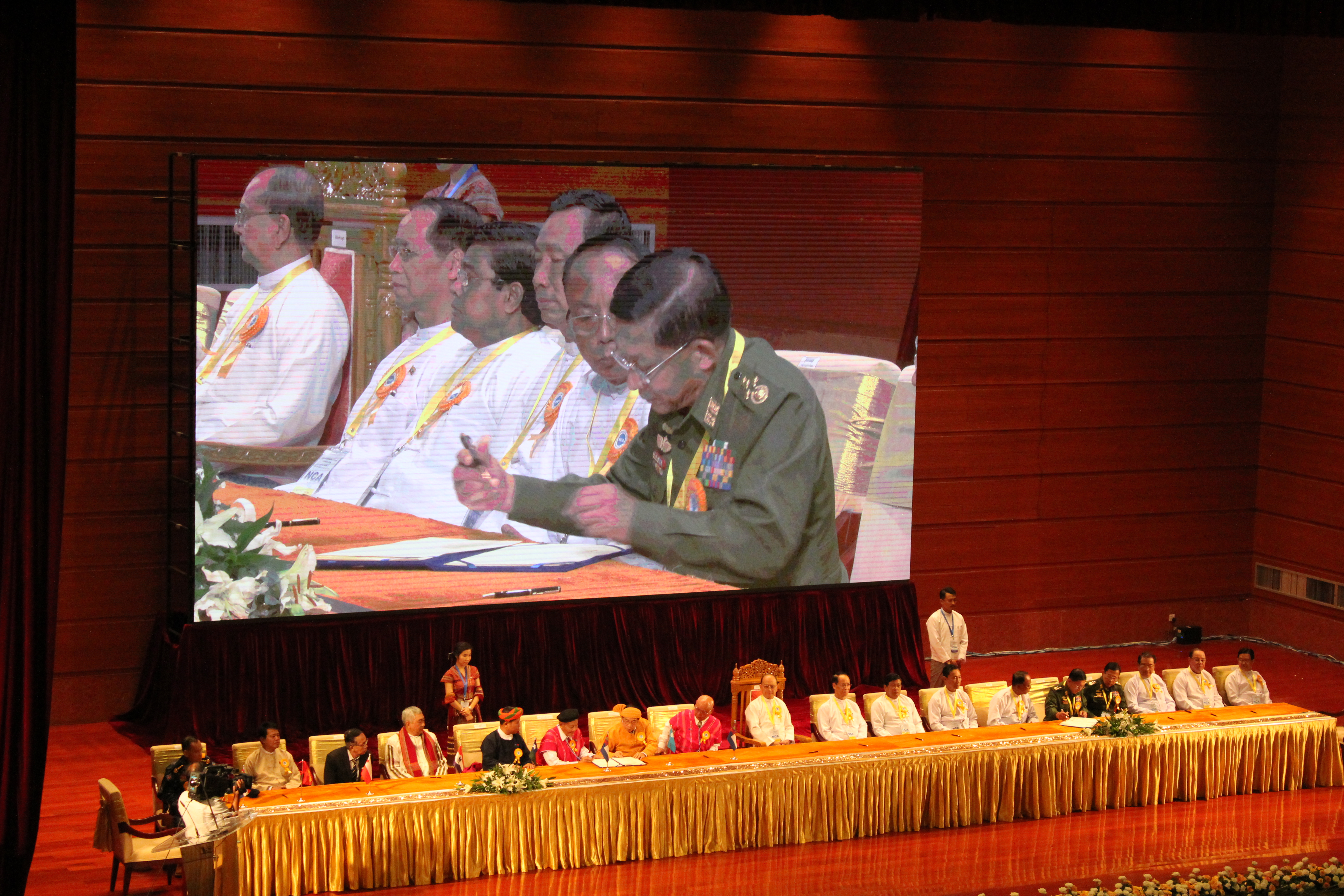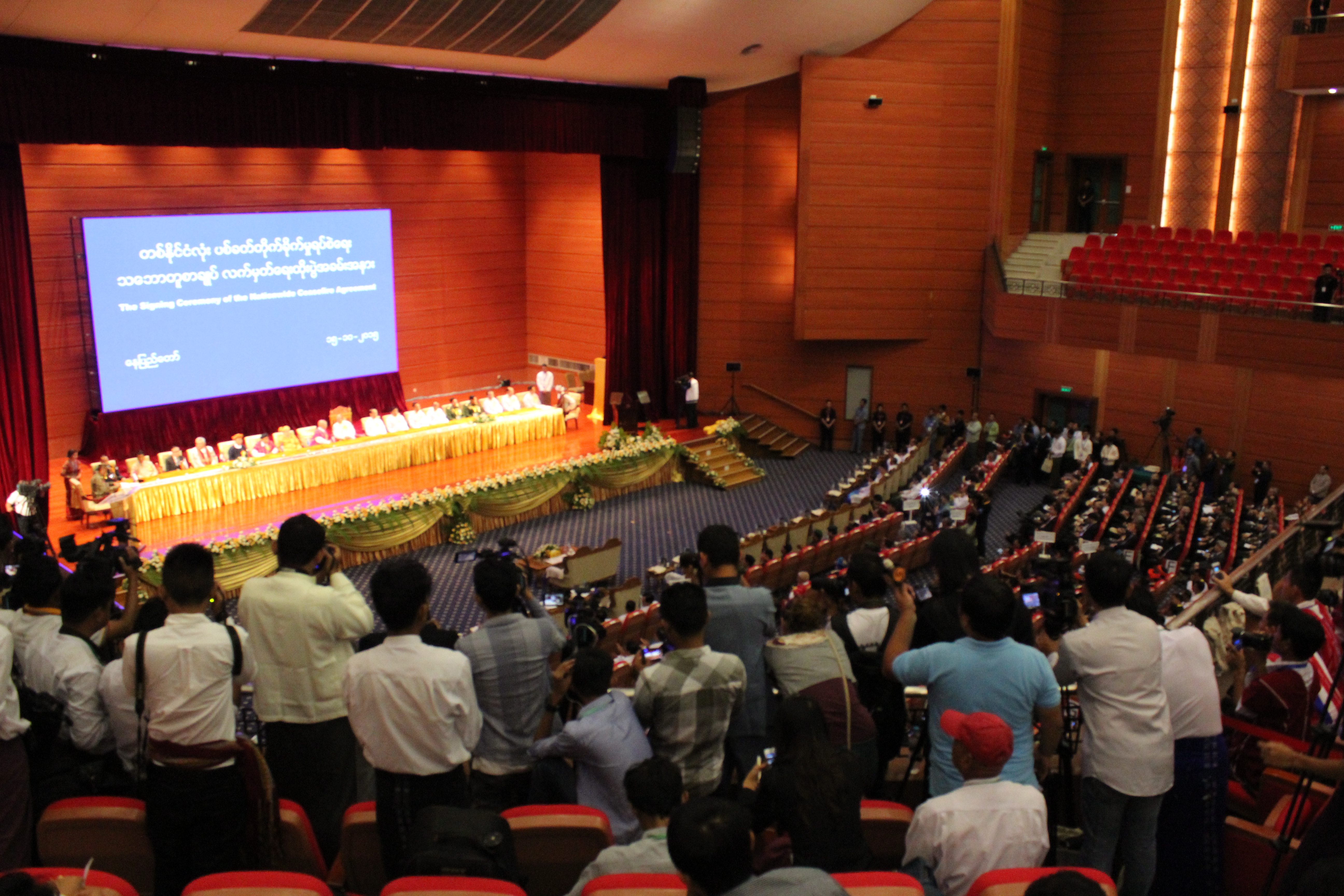CNI Article
23 April 2025
The civil war has been breaking out in Myanmar for over 70 years since three months after Myanmar gained her independence on January 4, 1948, due to the inability to resolve ethnic issues.
Successive governments have attempted to end the civil war in order to achieve internal peace, but it has not been resolved up to now. However, under the government of President U Thein Sein (retired), a different approach was taken, with a nationwide invitation to peace talks on August 18, 2011, and the talks were held.
In the past, peace was only achieved when the rebels laid down their arms. However, under the Thein Sein government, peace was built in the form of a ceasefire and peace talks, although the rebels still held arms, and the Nationwide Ceasefire Agreement (NCA) was implemented.
The NCA was proposed by ethnic armed organizations (EAOs), and the government, military, and Hluttaw accepted and discussed the EAOs’ proposal.
Then, on March 31, 2015, they signed the draft NCA agreement. Then, on October 15, 2015, the Restoration Council for Shan State (RCSS/SSA), the Karen National Union (KNU), the Karen National Union/Karen National Liberation Army-Peace Council (KNU/KNLA-PC), the Democratic Karen Benevolent Army (DKBA), the Pa-O National Liberation Organization (PNLO), the Chin National Front (CNF), the All Burma Students Democratic Front (ABSDF), and the Arakan Liberation Party (ALP) signed the NCA.
Then, on February 13, 2018, the New Mon State Party (NMSP) and the Lahu Democratic Union (LDU) signed the NCA. The Kachin Independence Organization (KIO/KIA), the United Wa State Party (UWSP/UWSA), the National Democratic Alliance Army (NDAA-Mingla), the Shan State Progressive Party (SSPP/SSA), the Palaung State Liberation Front (PSLF/TNLA), the United League of Arakan (ULA/AA), the Myanmar National Democratic Alliance Army (MNDAA), the Karenni National Progressive Party (KNPP), and the National Socialist Council of Nagaland (NSCN-K) have not signed the NCA and are still negotiating.

Although there are groups that have not signed the NCA and groups that have signed it, as a journalist, I will review the findings from the situations related to groups that have signed the NCA. It has been more than 5 years since the signing and implementation of the NCA between the government-military and 10 ethnic armed groups to end the ongoing internal armed conflicts in Myanmar.
In the five years since the NCA was launched, as a journalist, I have examined the NCA's shortcomings and whether the agreements were being implemented. Here are the findings:
Armed groups have not established a specific mechanism to take action if they commit human rights violations against civilians during the war or commit crimes prohibited under the NCA. Some point to the JMC, some point to existing laws, but the question is whether it can be solved in practice.
§ The government is unable to establish a mechanism to lead and resolve military and political crises arising from disputes and implementation of the NCA agreements. During the U Thein Sein government, the Union Peacemaking Central Committee (UPCC) was established as a mechanism to resolve conflicts. The NLD government did not establish a resolution mechanism. The SAC has a resolution mechanism, but it cannot act.
§ A situation where action can be taken against those who violate the agreements in the NCA agreement cannot be created. (There are martial laws but no peacekeeping laws - is it considered unnecessary?) Myanmar has too many armed groups, so a peacekeeping law should be enacted. Since the NCA also states that it will work with accountability and transparency, there should be a peacekeeping intermediary law.
§ The Joint Monitoring Committee (JMC) on the ceasefire, established under Chapter 3 of the NCA, has been weak in implementation and was not able to implement some cases.
§ The JMC has no authority to take action or intervene in the event of an armed conflict, but is only at the reporting level. The JMC has less authority than the Liaison Office formed by ethnic armed groups.
§ The JMC has no authority to investigate or take action on human rights violations committed against civilians during the war, but only to report them. Instead of creating a platform where officials can investigate human rights violations on the ground, they have only built a mechanism that works only when people who have been violated come forward to complain. The likelihood of being held accountable for the lives of people who come forward to complain about human rights violations is low. Because the armed groups that are the subject of the complaint are present at the JMC, the armed groups will know who has filed the complaint, which raises questions about how the complainant's life and safety are guaranteed.
§ There is a lack of public awareness or lack of capacity to raise public awareness of the agreements in the NCA and the nature of the JMC mechanism.
§ The JMC mechanism is not allowed to be established in some regions. The JMC-S (Region or State Level) has not been formed in Chin State and Rakhine State, where CNF and ALP are active. Some say there is no need to form a JMC because there is no armed conflict. Although there is no armed conflict, armed groups operating in the area are committing human rights violations and abuses against the population. The question is who will take responsibility if there is no JMC-S there.

- § Some armed groups are allowed to participate as representatives in the JMC-Ss formed in the regions and states where they operate, while some armed groups are not allowed to participate as representatives in the JMC-Ss formed in the regions and states where they operate. For example, The New Mon State Party (NMSP) is only allowed to have representatives in the Mon State JMC-S and is not allowed to participate in the JMC-S formed in Kayin State and Tanintharyi Region. The Karen National Union (KNU) is allowed to participate as a representative in the JMC-Ss formed in Kayin State, Mon State, Bago Region, and Tanintharyi Region.
§ State-level JMC-S meetings are often not held due to some of the JMC's operational guidelines. For example, (The Shan State-level JMC-S meetings, which were scheduled to be held once a month, were not held because the RCSS announced in November 2018 that it would temporarily suspend its attendance at JMC meetings.)
§ If an armed group decides not to attend a state-level JMC-S meeting, the meeting cannot be held. In the event of an armed conflict between an armed group that does not attend and another armed group, there is no other mechanism to resolve the conflict other than the JMC-S. For example, When the RCSS and the PNLO clashed, the Shan State JMC-S meeting was unable to resolve the clash because the RCSS had announced in advance that it would not attend JMC meetings. When the RCSS-the PNLO fighting caused public suffering and houses were burned, a complaint was filed with the Shan State JMC-S, but the meeting could not be held, so no resolution was possible.
§ The controversy stems from the lack of a specific location for national political dialogues. Due to these disputes, the RCSS has not been able to hold a national-level political dialogue (based on ethnicity) to this day. Similarly, the ALP has yet to hold a national-level political dialogue (based on ethnicity) in Rakhine State.
§ Chapter (6) of the NCA agreement stipulates the implementation of interim plans (rehabilitation and development programs), but they have not been implemented to date.
§ The NCA agreement stipulates that lower-level commanders must meet with one another to avoid territorial disputes and military conflict, but in practice, the process of meeting lower-level commanders between the Tatmadaw and the armed groups that have signed the NCA has not yet been implemented.
§ Since the NCA does not clearly define which areas are ceasefire areas, clashes have occurred both between armed groups that have signed the NCA (for example, the conflict between the New Mon State Party (NMSP) and the Karen National Union (KNU)) and between the Tatmadaw and groups that have signed the NCA (for example, the Tatmadaw and the RCSS, and the Tatmadaw and the KNU Brigade 5).
§ Although the NCA states that any project must be implemented after first negotiating and obtaining an agreement with the relevant armed groups operating in the area, when the parliament approves the budget, the Hluttaw implements the projects on its own, leading up to disputes and clashes between the Tatmadaw and the relevant armed group. (For example, clashes between the Tatmadaw and the KNU in Karen State) Therefore, the questions arise as to whether the Hluttaw has the right to influence the NCA agreement and whether the connection between the parliament and the NCA agreement is missing.
§ The preamble to the NCA has stated that we, the signatories of this Nationwide Ceasefire Agreement (NCA), mutually resolve to work together to implement the provisions of this Agreement without fail until they are successfully completed, based on responsibility, accountability, and transparency, in order to achieve long-term and sustainable peace.
 However, if one of the NCA-signed groups says it is no longer attending meetings, the NCA agreement has become weak and there is no mechanism in place to address the situation if all peace processes come to a halt.
However, if one of the NCA-signed groups says it is no longer attending meetings, the NCA agreement has become weak and there is no mechanism in place to address the situation if all peace processes come to a halt.
In November 2018, the entire peace process came to a standstill when the KNU, one of the NCA-signatories, announced a temporary suspension from attending official peace process meetings, and the RCSS announced a temporary suspension from attending official JMC meetings. And then, it is necessary to find a solution to how to deal with a situation in which any process could not be implemented.
Due to the political changes in Myanmar since February 1, 2021, the NCA's processes have been disputed, making it difficult to resolve whether it is still valid or invalid. The above-mentioned circumstances are the reasons that emerged from reviewing the NCA agreement and the implementation of the agreements contained in the NCA agreement. We all know that successfully implementing the peace process is a very difficult process.
To succeed in such a difficult process, it is necessary to review all aspects, identify gaps between reality and contractual conditions, and strive to make adjustments to achieve the best possible outcome.
The above points are based on the observations of an observer of the peace process, and may differ from the understandings and findings of the groups discussing the implementation of the NCA.
In any case, we will continue to monitor the work of relevant officials to ensure the effective implementation of the NCA and the agreements contained in the NCA.
Or, it remains to be seen whether they will learn from the NCA and implement another new agreement to move the peace process forward.




